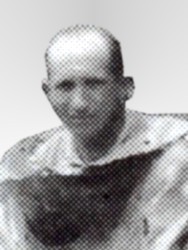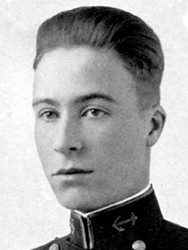Other Conflicts - Navy Cross - 1927-1936
Listed below are the recipients of the Navy Cross awarded for conflicts other than major wars as follows:
Nanking Affair (March 21-25, 1927) - 4
S-4 Rescue and Salvage (1927) - 11
Submarine Escape Device (1928-1931) - 8
Byrd Expeditions (1929 and 1933) - 8
Yangtze Service and Various Others (1930-1936) - 18
* Indicates Killed in Action (KIA), Missing in Action (MIA), Prisoner of War (POW), or Died Non-Battle (DNB)
Nanking Affair (March-June, 1927)
American ships cruised the Yangtze River and coat of China from 1854 until World War II to demonstrate the American presence and support American consular officers in China. Unrest in China made these cruises dangerous and often American ships were fired upon. In 1927 a violent uprising of Chinese Nationalist Forces in and around Nanking forced the rescue of a number of British and American civilians by the American ships Noa, Preston and Isabel (supported by British and Japanese ships.) Three Navy signalmen and one Chief Quartermaster received Navy Crosses in the four-day rescue mission and the immediate aftermath.
S-4 Salvage and Rescue (1927)
On the afternoon of December 17, 1927, the submarine S-4 collided with Coast Guard Cutter Paulding in Cape Cod bay. In less than five minutes the submarine sank to the ocean floor at a depth of 110 feet. The following morning, despite a heavy gale, diver Thomas Eadie braved the dangers to descend to the ocean floor and tap on the hull of the sunken submarine. Inside the hull, returning taps indicated that six men of the forty-man crew were still alive.
Diver William Carr, determined to try and rescue the trapped men, made the second dive in efforts to attach a hose to fill the ballast tanks and raise the sunken sub. With weather deteriorating, Fred Michaels made the third dive, during which he became entangled in the wreckage. With the tender Falcon tossed by high wind and waves, Thomas Eadie made his second dive of the day to rescue William Carr, earning the Medal of Honor.
Further rescue efforts were impossible because of the weather, and the Falcon returned to shore to deliver Michels to a hospital after his own harrowing dive. Three days later the last message was tapped out in Morse Code by the six stranded submariners. It said simply, "We Understand." The submarine sank on Saturday, and not until the following Wednesday did the storm let up enough for the Falcon to return to dispatch a diver to attach a hose to supply fresh air. It was too late, all six submariners had died.
Many dives remained in the salvage effort that finally brought the submarine to the surface on March 17, 1928, after which the S-4 was towed to the Charleston Navy Yard for recovery of the bodies and repair to the ship. Eleven divers received Navy Crosses for their role in the attempted rescue and subsequent salvage of the S-4. Seven of these men had participated in the similar salvage of the S-51 eighteen months earlier where they each earned their first award of the Navy Cross.
Submarine Escape Device (1928 - 1931)
From 1928 to 1931 the rebuilt S-4 under the command of Lieutenant Norman Ives, served as a floating laboratory to develop and test various means of rescuing trapped submariners. Two important devices were introduced, the Ives/McCann Bell and the Momsen Lung. The first was a large bell that could be lowered from rescue tenders to the hatch of a sunken submarine to evacuate survivors. The second was a bladder that, when mounted on the chest, could provide oxygen to sailors making a swimming ascent from sunken vessels. Both were designed primarily by Charles Momsen, who received the Distinguished Service Medal, the citation for which noted:
"During the early stages of its (the Lung's) design and development (he)...courageously, repeatedly and voluntarily risked his life in conducting experiments of a nature such that there was little or no information available as to their probable results. In the later tests of the device, when escapes were made from USS S-4 submerged to depths as much as 206 feet, he was not only the first person to venture the escape but also the leading and guiding spirit in all subsequent ones."
Seven other divers of the Submarine Safety Test Unit, S-4 were awarded Navy Crosses for their own roles in testing and developing a means of rescuing trapped submariners. (The result of this effort was demonstrated in the successful 1939 rescue of thirty-three survivors from the USS Squalus after it sank in 240 feet of water.)
YANGTZE SERVICE
Awards that were given to commemorate services performed by the personnel of the Navy and Marine Corps during the operations in the valley of the Yangtze River, China, in 1930 and 1932.
BYRD EXPEDITIONS
Expeditions that were undertaken to the Antarctic to conduct geological and photographic surveys.











